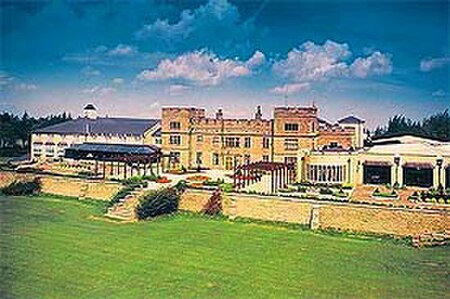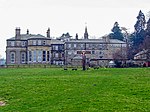Slaley Hall

Slaley Hall is a country house golf resort in Northumberland in North East England, built by local developers Seamus O'Carroll and John Rourke which hosted The Great North Open between 1996 and 2002. It is surrounded by 1000 acres (4 km²) of Northumberland forest and moorland. It also hosts Weddings, Anniversaries, Parties and Business events in the hotel run by the QHotels Group. It has many facilities including an indoor swimming pool, beauty salon, steam room, sauna, gym, sun beds, jacuzzi, and driving range. The England Football team have stayed at Slaley Hall for fixtures in the North East of England.The grounds include the Japanese Garden, a rare surviving example of a rock garden. It was designed and laid out before the First World War.
Excerpt from the Wikipedia article Slaley Hall (License: CC BY-SA 3.0, Authors, Images).Slaley Hall
Coal Road,
Geographical coordinates (GPS) Address Phone number External links Nearby Places Show on map
Geographical coordinates (GPS)
| Latitude | Longitude |
|---|---|
| N 54.896 ° | E -2.016 ° |
Address
Slaley Hall
Coal Road
NE47 0BX
England, United Kingdom
Open on Google Maps







